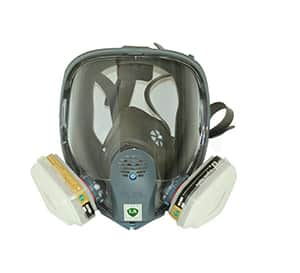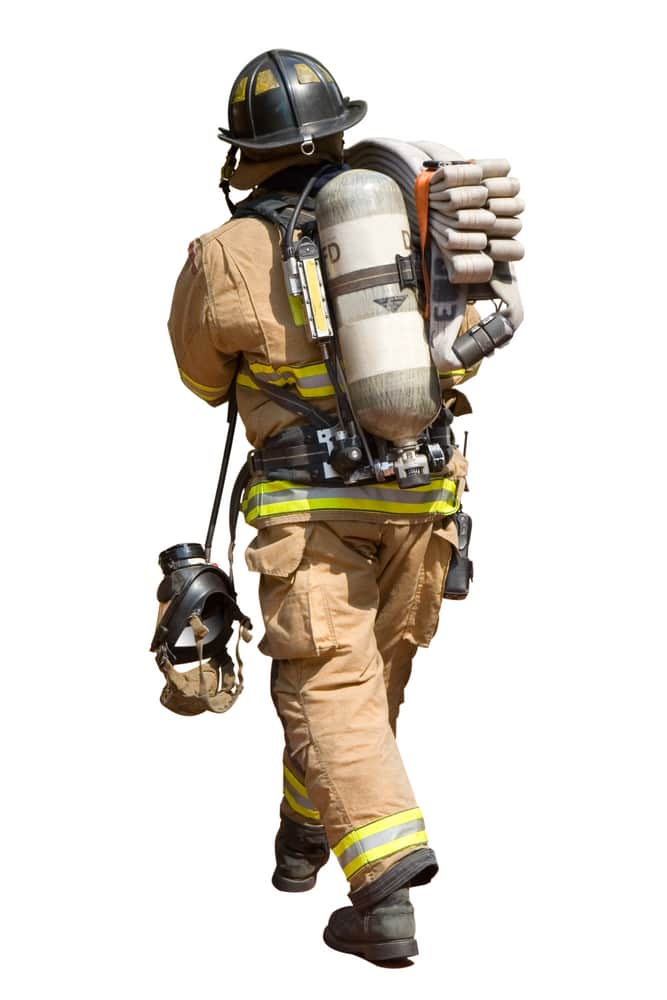Self-Contained Breathing Apparatus (SCBA) and Training
(SCBA) Training
In our previous blogs, we addressed the types of respirators employees may commonly be required to utilize in their jobs.
Within OSHA's 29 CFR 1910 General Industry regulations, under Subpart I- Personal Protective Equipment, resides the Respiratory Protection Standard.
Respirators, like all Personal Protective Equipment (PPE), require employers to ensure that employees not only use the PPE when required, but also provide training on criteria such as selection, proper donning and doffing, limitations of the PPE, inspection, cleaning, care, maintenance, and storage. This should all be part of an effective employer PPE program.
Types of Respirators
We also learned that there are two primary types of respirators:

- Air-purifying respirators (APRs), which remove contaminants from the air. Respirators of this type include particulate respirators, which filter out airborne particles, and air-purifying respirators with cartridges/canisters which filter out chemicals and gases.
- Atmosphere supplying respirators (ASRs) provide clean breathing air from a separate source. These respirators protect workers from many types of airborne contaminants (particles, gases, and vapors) and, in certain cases, oxygen-deficient atmospheres. These respirators are commonly used in Immediately Dangerous to Life or Health (IDLH) environments and emergency rescue applications.
The one ASR-type respirator that employers and employees tend to ask many questions about are self-contained breathing apparatus, or SCBAs, in which the breathing air source is carried by the user. They are primarily used for entry into or escape from environments considered to be IDLH and are commonly used by rescue professionals such as firefighters. They are also utilized in underwater and mining operations.
A statement of certification by the National Institute of Occupational Safety and Health, NIOSH, should appear on all respirators or respirator packaging. NIOSH approves respirators in accordance with Public Health Service, Department of Health and Human Services, Title 42 Code of Federal Regulations. A wealth of information on SCBAs can be found specifically within Chapter I, Subchapter G, Part 84, Subpart H.
SCBA Regulations
Here are some important excerpts from those regulations on SCBAs:
- SCBAs contain their own breathing air supply and can be either closed or open circuit:
- Closed-circuit apparatus. An apparatus of the type in which the exhalation is rebreathed by the wearer after the carbon dioxide has been effectively removed and a suitable oxygen concentration restored from sources composed of:
- Compressed oxygen; or
- Chemical oxygen; or
- Liquid-oxygen.
- Closed-circuit apparatus. An apparatus of the type in which the exhalation is rebreathed by the wearer after the carbon dioxide has been effectively removed and a suitable oxygen concentration restored from sources composed of:
- Open-circuit apparatus. An apparatus of the following types from which exhalation is vented to the atmosphere and not rebreathed:
- Demand-type apparatus. An apparatus in which the pressure inside the facepiece in relation to the immediate environment is positive during exhalation and negative during inhalation; or
- Pressure-demand-type apparatus. An apparatus in which the pressure inside the facepiece in relation to the immediate environment is positive during both inhalation and exhalation.
Emergency Entry Use
The following respirators may be classified as designed and approved for use during emergency entry into a hazardous atmosphere:

- A combination respirator which includes a self-contained breathing apparatus; and
- A Type “C” or Type “CE” supplied air respirator, where:
- The self-contained breathing apparatus is classified for 3-, 5-, or 10-minute service time and the air line supply is used during entry; or
- The self-contained breathing apparatus is classified for 15 minutes or longer service time and not more than 20 percent of the rated capacity of the air supply is used during entry.
Self-contained breathing apparatus classified for less than 1 hour service time will not be approved for use during underground mine rescue and recovery operations except as auxiliary equipment.
Self-contained breathing apparatus classified for less than 30 minutes' service time will not be approved for use as auxiliary equipment during underground mine rescue and recovery operations.
SCBA Components
Each self-contained breathing apparatus contain the following component parts:
- Facepiece or mouthpiece, and nose clip;
- Respirable breathing gas container;
- Supply of respirable breathing gas;
- Gas pressure or liquid level gages;
- Timer;
- Remaining service life indicator or warning device;
- Hand-operated valves;
- Breathing bag;
- Safety relief valve or safety relief system; and
- Harness.
Training
Beyond wearer evaluation and fit testing, training should include all instructions and recommendations provided by the manufacturer on use, maintenance, cleaning and care, and warnings regarding the respirator's limitations. Initial and ongoing training on SCBAs is extensive and industry application specific.
For example, if the SCBA is used in firefighting applications, one should consult the applicable National Fire Protection Association (NFPA) standards such as:
- NFPA 1500: Standard on Fire Department Occupational Safety, Health, and Wellness Program
- NFPA 1852: Selection, Care, and Maintenance of Open-Circuit Self-Contained Breathing Apparatus
- NFPA 1989: Standard on Breathing Air Quality for Emergency Services Respiratory Protection
- NFPA 1404: Standard for Fire Service Respiratory Protection Training
If the SCBA is to be used for emergency response, then training shall be based on the duties and function to be performed by each responder of an emergency response organization. The skill and knowledge levels required for all new responders shall be conveyed to them through training before they are permitted to take part in actual emergency operations on an incident. This includes all employees who participate, or are expected to participate, in emergency response at any level.

